Even just an annual check-up at the veterinarian office can be a stressful place for both dog and owner.
Add in some stranger danger or leash reactivity, and what should be an easy, quick event can become a nightmare.
But every dog has to go to the vet, so we’ve got some tips on how to prepare both you and your pooch for a smooth experience!
- Prepare before leaving the house.
Make sure you have super yummy, high-value treats in your treat pouch, like hot dog, pepperoni, or cheese. When your dog is stressed or in a very distracting environment, they may need rewards that are more motivating, like meat. If your vet has prescribed as-needed anxiety medication, make sure to administer the dose about an hour before leaving for the vet. If your dog gets car sick, try driving on an empty stomach or giving the vet-prescribed dose of medication. If your dog is a bite risk, strap on the muzzle outside of the building before going inside.

- Consider waiting outside until it’s time to head to the exam room.
Sometimes the lobby can be even more stressful than the examination room, especially for a reactive or excited dog. If your dog is very reactive, lunging and barking at other dogs, your easiest solution may be to wait in the car or outside until the staff is ready to take you back.
- Train a solid stay for waiting, weighing, and paying.
A great habit is to teach your dog to hold a sit or down stay until it is your turn to be seen. I tuck my dog away, either on a bench or under my chair, in a down stay, treating her while other dogs exist in the room.
A solid stay is also useful when a dog needs to sit patiently on a scale to see how much they weigh. Practice luring your dog onto the scale and doing a sit stay and treating while the staff records your dog’s weight. A wiggly butt doesn’t take an accurate reading!
And, when all is said and done, a stay will help when you’re ready to leave. As you check out, practice a sit stay by your side so you can handle payment and scheduling without being dragged around the room.
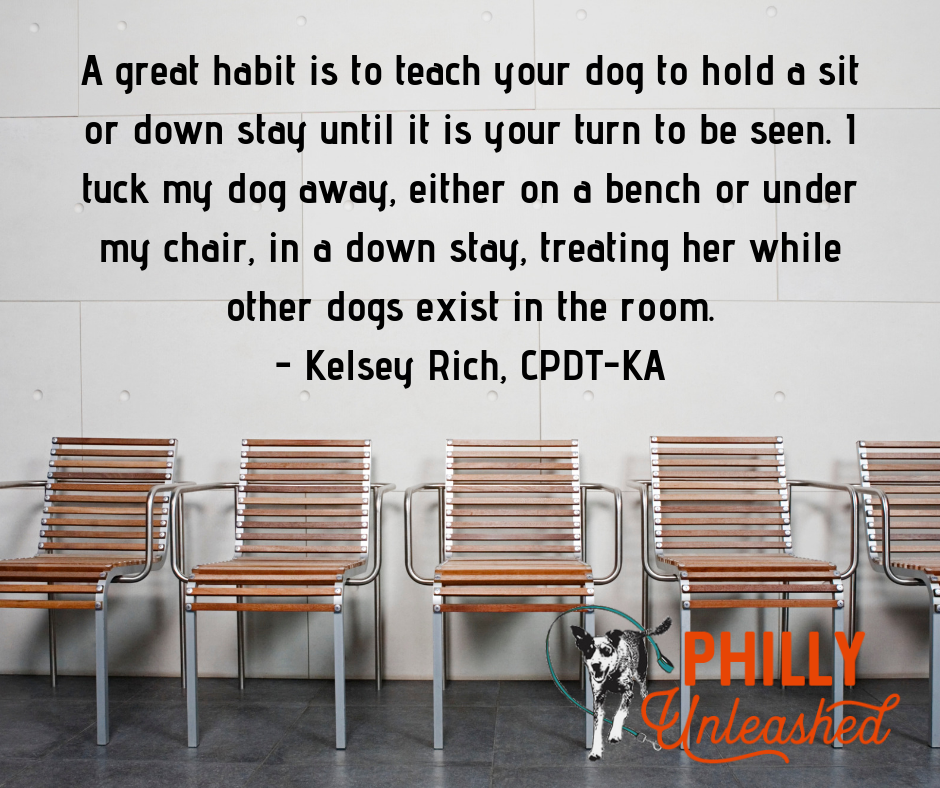
- Say something.
Don’t be afraid to speak up and let other owners know your pup needs space! We all need to advocate for our dogs’ best interests. For those who have excited dogs, a stay helps keep them calm in a busy waiting room and gives other owners the space they may need.
- Use “look” and loose leash walking skills when heading to the exam room.
Once ready to head back in the exam room, utilizing your training tools down the hallway is helpful. Use your “look” command and treat for walking with no tension on the leash. This also prepares nervous dogs by keeping them calm while heading back.
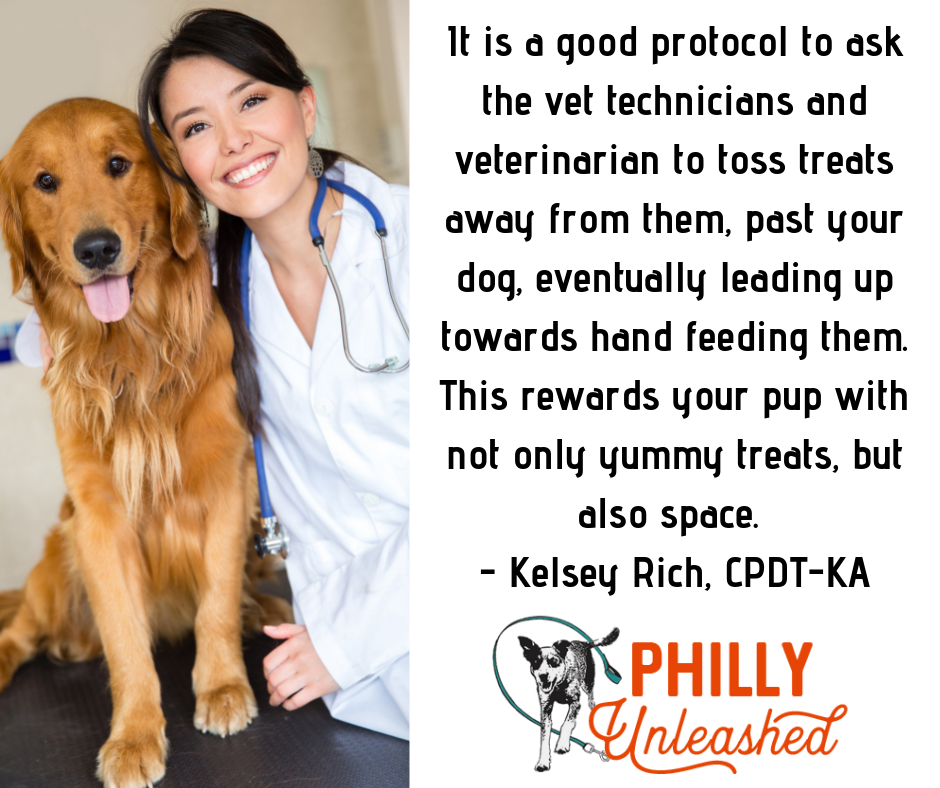
- Try confidence building exercises in the exam room.
The examination room can be a tough area for dogs who have stranger danger or handling issues. Imagine being in a small room stuck with people you’re scared of, and then they touch you all over!
While waiting to be seen, I like to do confidence building exercises with my dog, such as tricks she knows very well like touch, sit pretty, rollover, etc. It is a good protocol to ask the vet technicians and veterinarian to toss treats away from them, past your dog, eventually leading up towards hand feeding them. This rewards your pup with not only yummy treats, but also space! If your dog is muzzled, use treats that can easily be licked up—my favorite is cream cheese out of a travel squeeze bottle. During the examination, I prefer to have my dog practice a stand stay, treating her as she holds that position while the distraction of the examination occurs. At the beginning of your training for this, it’s okay to take frequent breaks so their stay duration doesn’t go over their capability.
- Work on body handling at home.
For dogs who dislike body handling, your practice will actually occur outside of the vet’s office. Have your pup learn to stand on a platform such as a sturdy box, marking and treating each time you touch them. Mark and treat for holding their ears and taking a peek inside, rubbing your hand down their body, holding a stethoscope-type object to their chest, and other actions that typically happen during the exam. Then, bring this platform to the visit! If practiced enough, your dog will start to associate the platform and handling with delicious food.
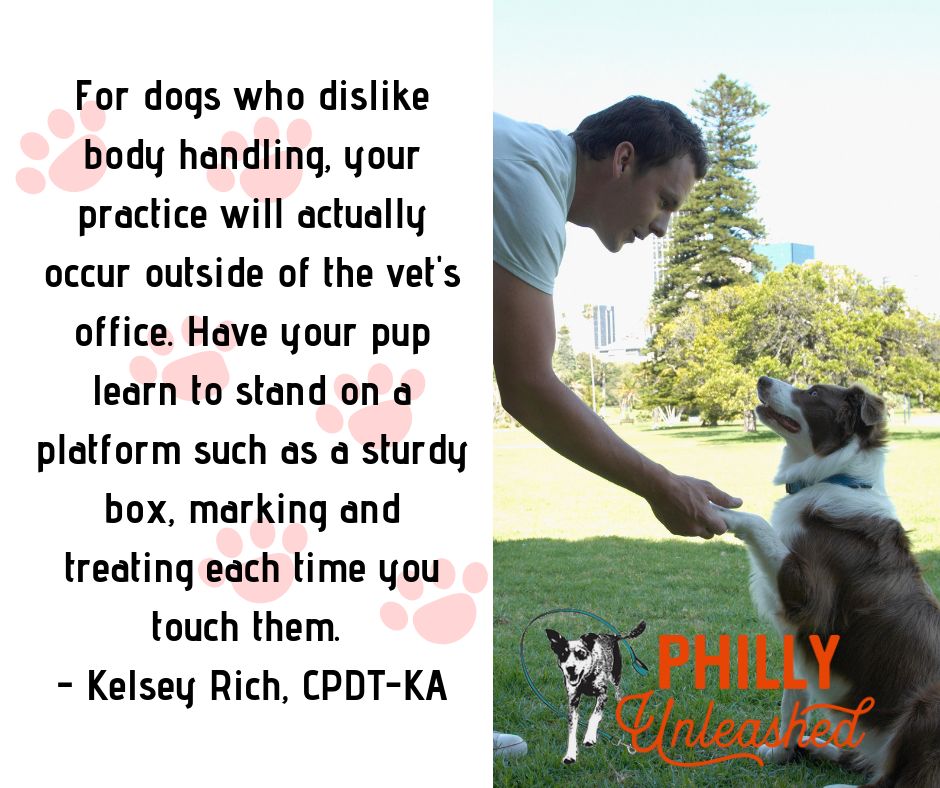
- Practice for long-term results.
Your dog may not be able to preform all of these commands successfully the first time you try; you will have to build up their impulse control. Ask your vet’s office if it is okay to bring your dog by once in a while and practice your stay in the waiting room. If you can keep the lobby area stress free, you will have an easier time once you head back! All of this practice will give you good long term results.

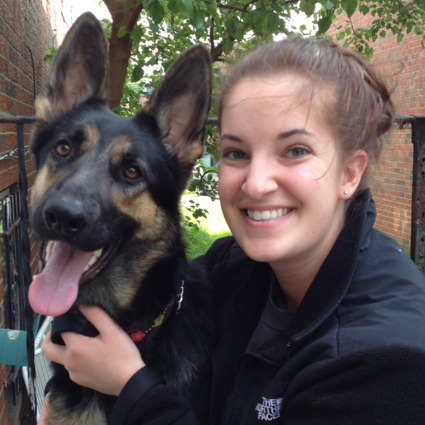
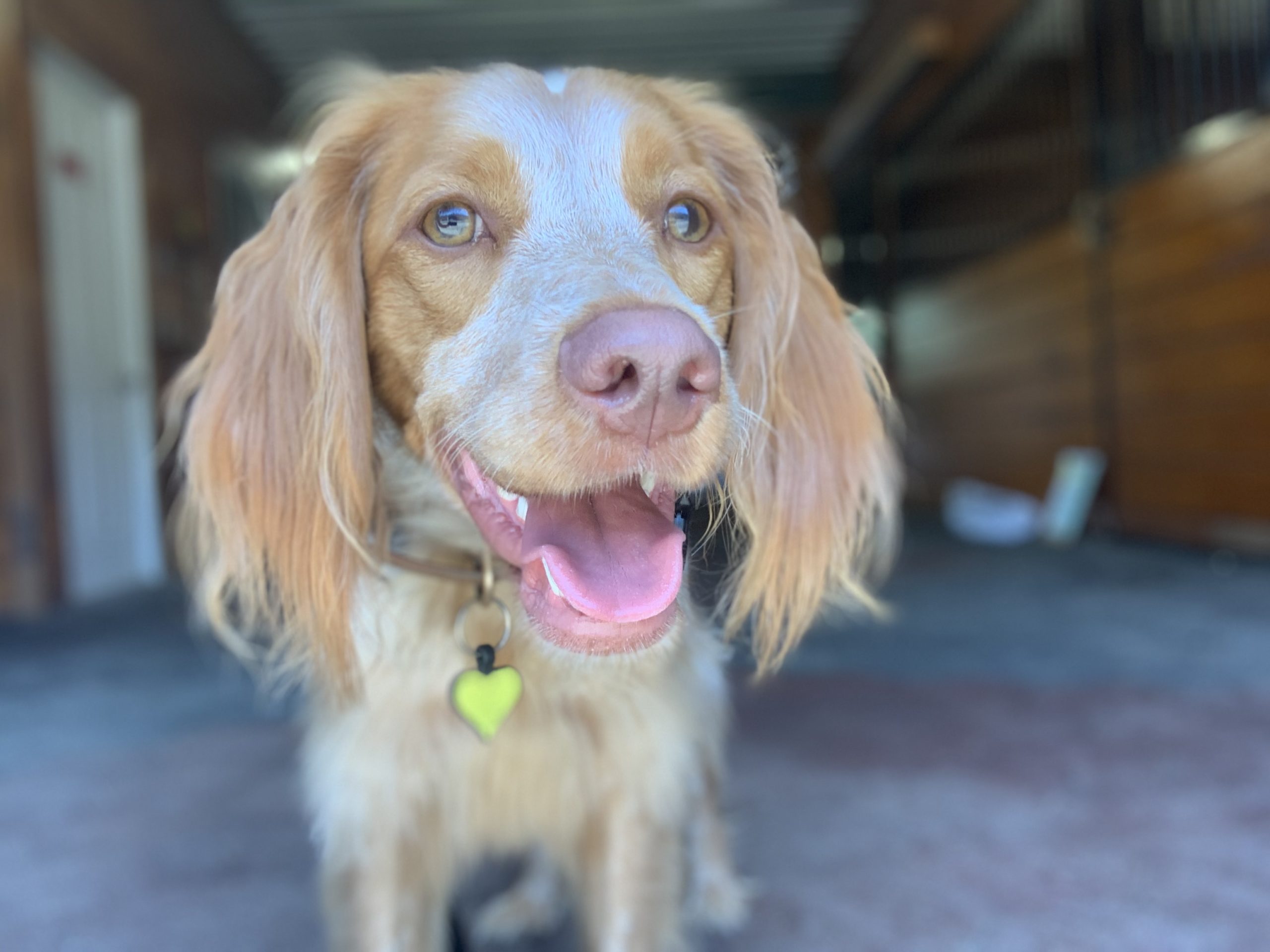
These tips are awesome! Our vet had us come in once a month when Charlie was a puppy! We’d say hello to all the nice people, get a cookie and a weight check. I got to watch him grow and now he LOVES to visit the vet. He’s still a little nervous in the exam room but this helped us a ton.
Thanks for this advice for helping a pup be less stressed when visiting the vet. You mentioned that you should try to teach your dog to sit down or stay. This sounds really important if it can also help keep your dog behaved while at the vet, making the process go by much faster.
Comments are closed.